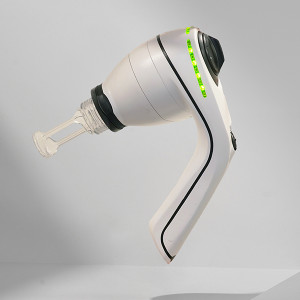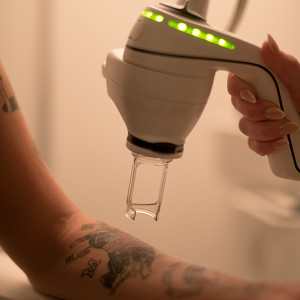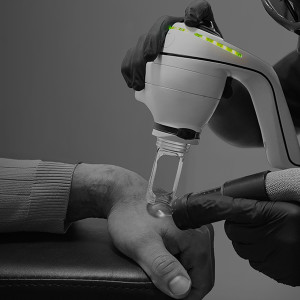
Melasma is a more common skin condition than you think. Read on to learn more about it and effective ways to treat it and stop it from coming back.
You might be wondering, what is melasma and how do I know if I have it? Turns out it’s more common than you think among women. Melasma is a skin condition that leads to discoloured patches on your skin caused by hormone fluctuations (hello, stress) and sun exposure. You’ll mainly find it on your face or sometimes on your neck and forearms.
Melasma isn’t a serious condition, although you may find it affects your confidence and how you feel about the way you look. Oftentimes, it’s also recurring. Which can be frustrating for many seeking out treatment and finding it keeps coming back.
Publish Date in article


What is the main cause of melasma?
In technical terms, melasma is caused by cells in our body, called hyperfunctional melanocytes, that produce pigment. If they produce excess amounts of melanin pigment, it builds up in the top layer of our skin (the superficial layer called the epidermis) as well as the deeper layer (called the dermis), making it hard to go away—just like a tattoo.
What causes excess melanin pigment to be made?
Melasma is triggered by two things: sunlight and hormone fluctuations.
Spending too much time in the sun, especially if you’re not wearing an SPF and your face isn’t shaded by a hat or cap, is one of the main causes of melasma. That’s because when you’re out in the sun, your body produces more of a substance called melanin, and it’s too much melanin that causes melasma. The same effect happens from sunbeds.
Pregnant women also have a higher tendency to suffer from melasma due to a raised level of the hormones oestrogen and progesterone. Menopause, and the hormone changes that follow, can also trigger it.
Some other causes of melasma include your skin tone (people with medium or dark skin tones tend to develop melasma more often), if you’re related to someone with melasma and if you’re a woman aged between 20 and 40.


How can I remove melasma from my face?
Though not a serious skin condition, if you have melasma on your face and you feel like it’s affecting your self-confidence and body image, there are ways to remove it. Your GP may be able to prescribe a cream to even out your skin tone. Practising safe sun care with a high SPF, frequent exfoliation and managing stress levels are all other possible courses to take, but it’s often hard to treat and can come back frequently and unexpectedly.
The best way to see long-term results is to try laser treatment. It's the most effective way to remove melasma and other skin pigmentations because the laser is able to target the deeper layers of the skin (the dermis) to eradicate excess melanin pigment, whereas many other courses only focus on treating the melanin in the surface of the skin.
At NAAMA, our unique laser technology breaks skin pigmentations, including melasma, down into small particles for easy removal by your body’s immune system. The laser is gentle, skin-safe and ultra precise, meaning it’s fine for use even on your face.
Publish Date in article


Does laser treatment get rid of melasma?
Laser treatment is the most effective way to get rid of melasma. Our LightSense™ laser technology provides fast, safe pigmentation removal. It’s skin safe and relatively painless, so you can carry on your day as normal and have treatments every two to three weeks.
The results are long term thanks to the laser’s ability to target the pigment in deeper layers of the skin, helping to significantly reduce melasma’s return.
To find the best melasma treatment for you, take our quiz today. For more information about tattoo removal, request a callback from our qualified team today.











